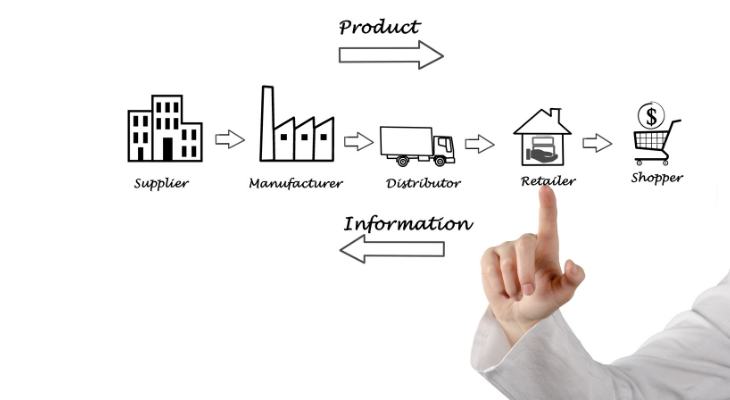
1 - Hong Kong Free Press, 14 May 2025
2 - Trade and Industry Department HK, 10 April 2025
3 - Asia Financial, 12 June 2025
4 - BBC, 13 May 2025
5 - Federal Register, August 2020
In May 2025, a significant update to U.S. tariff policy was announced, targeting goods originating from both mainland China and Hong Kong. Under President Trump’s new measures, a 10% baseline “reciprocal” tariff applies to affected imports, while the de minimis threshold — which previously allowed low-value packages (under US$800) duty-free entry — has been revised to a minimum 54% duty on parcels, even for small e-commerce shipments1.
For Hong Kong exporters, this policy shift brings increased landed costs, tighter customs compliance, and added complexity in logistics coordination — especially for SMEs selling to US customers via e-commerce platforms. Businesses dealing in electronics, apparel, packaged goods, and other high-volume exports may need to re-evaluate pricing, documentation processes, and shipping routes.
In this article, we break down the mechanics of the new tariff rates, explore their broader impact on the Hong Kong economy, and highlight how DHL Express HK can help you respond strategically — with smarter trade routing, compliance support, and tariff mitigation tools.
The new U.S. tariff regime introduced in 2025 builds on previous trade actions but formalises a stricter, layered structure. Rather than a single flat rate, it introduces a tiered system combining existing duties with a newly imposed 10% “reciprocal” baseline tariff on goods from China and Hong Kong — part of a broader executive strategy to enforce trade parity2.
This 10% surcharge applies on top of current levies, pushing the total tariff burden as high as 55% for many categories, especially technology, household goods, and consumer electronics3. This stacking effect can significantly raise final import costs for U.S. buyers and force Hong Kong exporters to rethink pricing strategies.
Another key policy shift is the withdrawal of de minimis exemptions for goods shipped from China and Hong Kong. Previously, goods valued under US$800 could enter the U.S. duty-free — a benefit widely used by SMEs and e-commerce merchants. That exemption is now revoked, and even small parcels are subject to a flat minimum tariff of 54%4.
As the new U.S. tariffs take effect, Hong Kong exporters will face more than just paperwork — these changes have real consequences for profitability, operations, and future market planning.
Exporters of electronics, apparel, packaged foods, and other consumer goods to the United States will likely face higher landed costs due to the increased tariffs. These additional costs can squeeze profit margins or require businesses to raise prices, potentially affecting competitiveness in the U.S. market. For SMEs selling via platforms like Shopify or Amazon, even small pricing shifts can impact customer demand.
Goods manufactured in Hong Kong must now be labelled as “Made in China” based on updated U.S. customs requirements5. This makes it even more important to ensure accuracy in your HS codes, origin declarations, and supporting documentation.
Incorrect or incomplete paperwork may result in delays, fines, or even returned shipments. To avoid disruptions, businesses should double-check all declarations and, where possible, seek support from experienced customs advisers.
The evolving trade environment may prompt businesses to reassess their reliance on the U.S. market. Consider whether current fulfilment routes are still cost-effective and explore opportunities to diversify your market reach.
Some strategies to consider include:

In the face of evolving tariff policies, building a more resilient supply chain is no longer optional — it’s essential. Hong Kong exporters should evaluate both upstream and downstream operations to reduce reliance on any single market, including the United States.
If your supply chain is heavily tied to U.S.-bound exports, consider expanding into emerging markets with lower trade barriers. Southeast Asia and Europe, for instance, offer growth potential and may carry fewer tariff burdens. Shifting part of your sales focus to intra-Asia markets can also reduce exposure to geopolitical volatility.
Assess the feasibility of alternate sourcing models or production hubs closer to your customers. Distributed inventory, regional fulfilment centres, or dual-source procurement strategies can help maintain continuity during sudden regulatory shifts.
DHL Express operates in over 220 territories worldwide, offering agile shipping solutions tailored to changing trade environments. Whether you’re rerouting goods via low-tariff corridors, tapping into bonded warehouse services, or adjusting fulfilment models, our global infrastructure and regional expertise can support your pivot.

To stay competitive in the face of rising tariffs and tighter trade regulations, Hong Kong exporters need to adopt smarter strategies. From optimising trade routes to leveraging digital tools for customs management, here are key ways businesses can respond effectively.
To stay competitive amid rising tariffs, Hong Kong exporters should re-evaluate their trade lanes, cost structures, and fulfillment strategies — which may include exploring alternate routes through Southeast Asia or Europe, or leveraging free trade zones and bonded warehouses to reduce duty exposure.
Once these strategies are mapped out, access to timely data becomes key — and that’s where DHL Express can help.
DHL Express offers global trade insights to help you compare delivery timelines, cost efficiencies, and market entry points. By partnering with a provider that understands regional dynamics, you can make informed decisions about where and how to ship your goods more effectively.
DHL’s My Global Trade Services (MyGTS) platform supports tariff planning and compliance by helping you:
In tandem, DHL Express HK’s customs brokerage support helps streamline cross-border shipping by ensuring that all documentation is complete, accurate, and compliant with US import regulations. Our team of customs experts supports you in navigating complex tariff codes, classification requirements, and changing trade policies — reducing the risk of clearance delays or penalties. With prepaid duties and tax options, businesses can also choose to cover fees upfront on behalf of their US-based customers, creating a smoother delivery experience and minimising the likelihood of last-mile issues or returned shipments.
When navigating shifting regulations, transparency matters. DHL’s MyDHL+ platform gives you end-to-end control with:
If you’re shipping internationally, MyDHL+ helps you monitor performance and ensure consistency in cross-border delivery. For businesses managing multiple shipments or marketplaces, this level of visibility can streamline operations and improve customer trust.
Whether you're rethinking your import-export model or need real-time support navigating tariff shifts, DHL Express HK is here to help. Open a DHL Express business account or speak with our international trade logistics specialists to explore routing solutions, duty planning tools, and compliance support designed for Hong Kong exporters.
Open a DHL Express Corporate Account Today!1 - Hong Kong Free Press, 14 May 2025
2 - Trade and Industry Department HK, 10 April 2025
3 - Asia Financial, 12 June 2025
4 - BBC, 13 May 2025
5 - Federal Register, August 2020